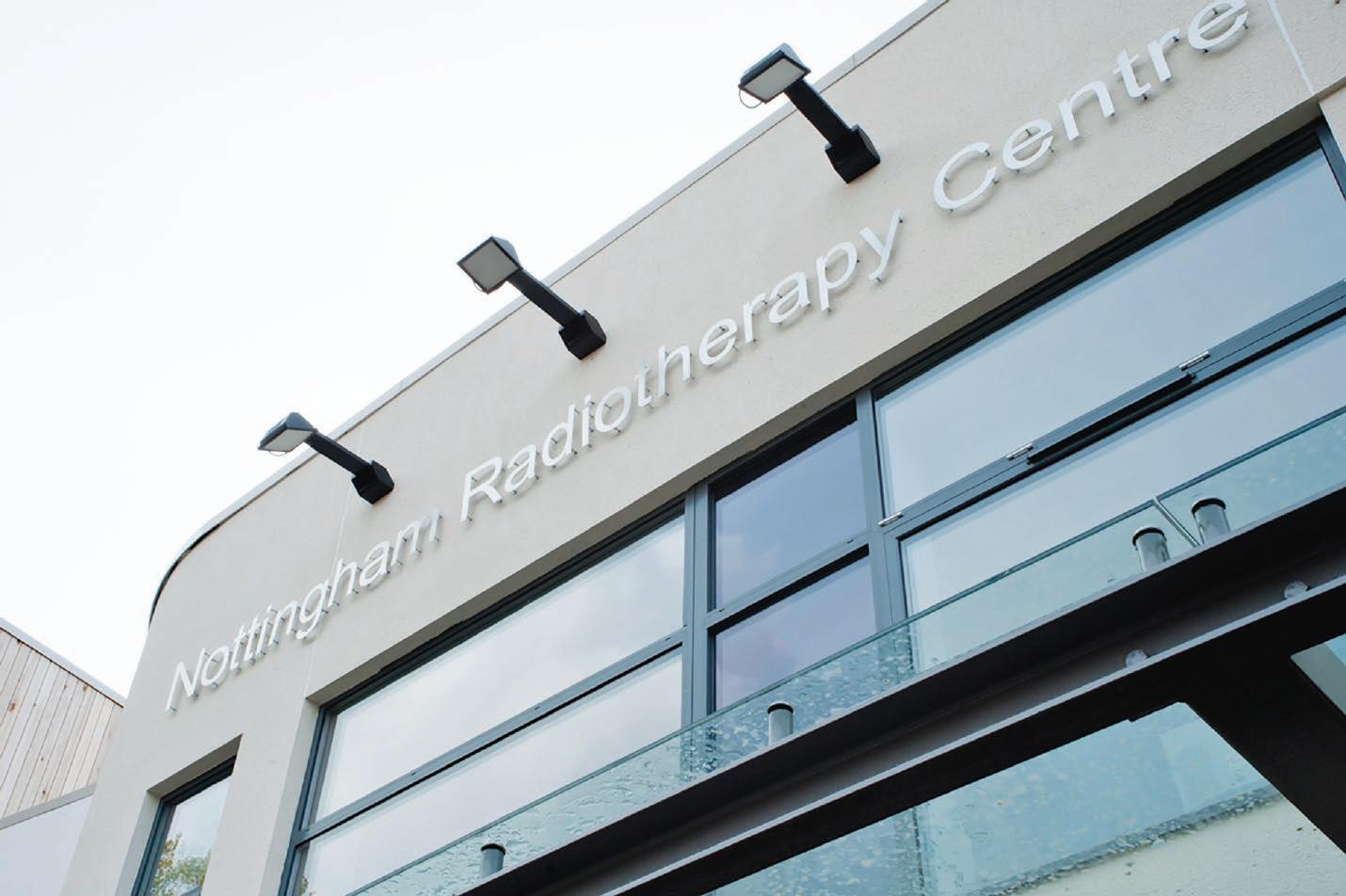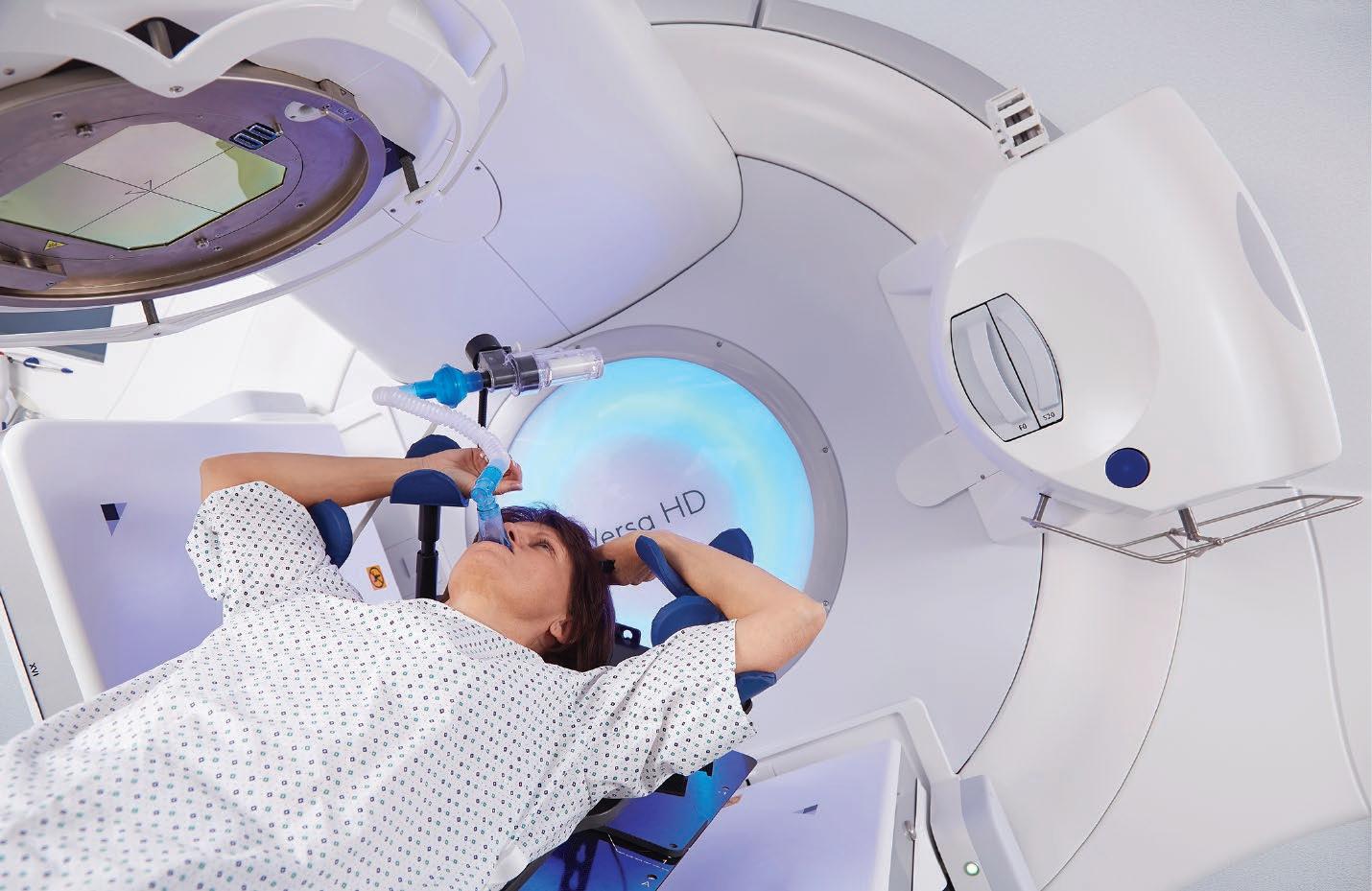IMPROVING THE ACCURACY AND PRECISION OF STEREOTACTIC RADIATION THERAPY
Stereotactic Radiosurgery a Precise, Potent Technique to Treat Brain Tumours Elekta Ltd Clinicians at the UK’s Nottingham University Hospital use sophisticated radiotherapy technology to lock onto and eradicate the smallest intracranial targets.
Foreword When open surgery, chemotherapy and conventional radiotherapy are poor options for a patient with a brain tumour, physicians turn to stereotactic radiosurgery (SRS). SRS is a technique that harnesses precisely focused photon beams to deliver a highly concentrated radiation dose to abnormal target tissues. Common treatment platforms include linear accelerators such as Versa HD™ (Elekta) and SRS systems such as Leksell Gamma Knife® Icon™ (Elekta). Potent SRS irradiation – often possible with a single treatment session – destroys the DNA within tumour cells, disrupting replication and triggering cell death. While SRS’s high doses spell doom for cancer cells, the technique could cause serious damage to nearby healthy tissues. This may occur as a consequence of imprecise tumour targeting and/or the dose to the lesion permeates into surrounding tissues. Fortunately, modern SRS employs advanced imaging, planning, immobilization, beamshaping, motion management, beam delivery and quality assurance methods to ensure a safe and effective treatment. Nottingham University
Hospitals radiotherapy professionals have been using SRS since 2016 to help patients affected with brain tumours. Over the last two decades, SRS has emerged as an attractive option for individuals with benign and malignant brain tumours, according to Luis Aznar-Garcia, MD, PhD, Consultant Clinical Oncologist and Brain Mets MDT (Multidisciplinary Team) and SRS Lead at the Department of Oncology, Nottingham University Hospitals (NUH), NHS Trust. “SRS in the brain is key,” he says. “For a single brain met (metatstasis), SRS is a patientfriendly alternative to surgery and when there are multiple mets it’s the only treatment. In addition, systemic treatment of brain mets doesn’t work most of the time. SRS can achieve a local control of 80 to 90 percent, which is very similar to surgery outcomes for healthier mets patients. In the case of meningiomas and acoustic neuromas, surgery is an overly aggressive option, whereas SRS provides a minimally invasive alternative with a very good chance of local control.” Dr. Aznar-Garcia adds that he holds a dim view of whole brain radiation therapy (WBRT),
Over the last two decades, SRS has emerged as an attractive option for individuals with benign and malignant brain tumours.
WWW.HOSPITALREPORTS.EU | 11







